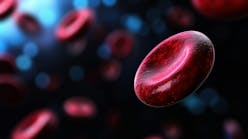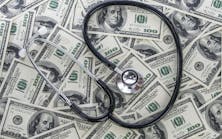Four clinical experts focus on a variety of lab concerns
Jellybeans for GTT?
Q:
I am looking for an article
about glucose tolerance testing using jellybeans. Can you help me?
A:Two studies have looked at the use
of jellybeans as a substitute for a liquid 50-gram glucose load for the glucose tolerance test.1,2 Each of these studies was performed in the context of a one-hour screening test for gestational diabetes, and neither considered plasma glucose concentrations at times other than one hour after ingestion of the glucose load.
Given these restrictions, Boyds1 dose of 18 jellybeans proved to be insufficient to achieve a glucose concentration equal to that of the liquid glucose, but Lamars2 dose of 28 jelly beans was effective. Both studies used a specific brand of jellybean composed of sugar, corn syrup, modified cornstarch and dextrose. This is a different composition from the liquid test beverages, and might act in a different way at a higher test load used for nongestational diabetes testing, or at a time interval other than one hour.
Another defect of the studies was that the incidence of diabetes in the test population was so low that the sensitivity and specificity of the jellybean test load could not be assessed reliably. Lamar concludes his paper: A recommendation for wider use awaits the results of further research to determine whether jellybeans prove equal to the 50-gram glucose beverage for the detection of gestational diabetes mellitus.2
On the positive side, jellybeans were tolerated better than the glucose liquid by the test subjects.
Daniel M. Baer, MD
Professor Emeritus
Department of Pathology
Oregon Health and Science University
Portland, OR
References
- Boyd KL, Ross EK, Sherman SJ. Jellybeans as an alternative to a cola beverage containing fifty grams of glucose.
Am J Obstet Gynecol. December, 1995;173:1889-1892 . - Lamar ME, Kuehl TJ, Cooney AT, Gayle LJ, Holleman S, Allen SR. Jellybeans as an alternative to a 50-gram glucose beverage for gestational diabetes screening.
Am J Obstet Gynecol. November, 1999;181:1154-1157.
Bending the arm after phlebotomy
Q:
A doctor has asked whether,
after drawing blood, the patient should be instructed to bend the arm in order to hold pressure. In my 28 years, I have always been told to bend the arm. Is there new information that indicates the arm should not be bent after phlebotomy?
A:
Most textbooks agree that patients should not be asked to bend their arm up as a means of keeping pressure on a venipuncture site after needle removal.1-3 According to the NCCLS standards, Under normal circumstances, the phlebotomist should slip the gauze pad over the site, continuing mild pressure. Notice that no mention is made of allowing the patient to bend his arm. It is thought that this technique does not provide adequate pressure to prevent hematoma formation. The risk is that if inadequate pressure is applied, a hematoma can result leading to nerve injuries and reflex sympathetic dystrophy.4 Therefore, facilities should permit the prevailing literature to weigh heavily when establishing their procedures on issues for which there is a consensus.
NCCLS does not suggest that cooperative patients be allowed to apply direct pressure themselves while phlebotomists tend to labeling specimens, for example. Tempted phlebotomists must realize that the standards place the responsibility for applying pressure directly with the phlebotomist. Therefore, if one chooses to allow patients to apply direct pressure, one must always be observant for those who may apply inadequate pressure or who discontinue pressure prematurely. Should the patient fail to provide adequate pressure and bleeding or hematoma occurs, the phlebotomist may be liable for any undue consequences. For this and other reasons, collectors should carefully weigh the risks of soliciting patient assistance and follow facility protocol.
Dennis Ernst, MT(ASCP)
Director
The Center for Phlebotomy Education Inc.
Ramsey, IN
References
- McCall R, Tankersley C.
Phlebotomy Essentials. Lippincott Raven;1998:2.
- Ernst D, Ernst C.
Phlebotomy for Nurses and Nursing Personnel. Healthstar Press;2001.
- Garza D, Becan-McBride K.
Phlebotomy Handbook. Appleton & Lange;1999.
- Horowitz S. Venipuncture-induced causalgia: anatomic relations of upper extremity superficial veins and nerves, and clinical considerations.
Transfusion. 2000;40:1036-1040.
Effect of radiographic agents on
lab specimens
Q:
We are trying to write a policy
addressing the collection of laboratory specimens after contrast dyes or imaging agents have been administered. Ultimately, we would like to have all specimens collected before the administration of such media, however, this is not always possible. I have contacted our instrument manufacturers and have reviewed the package inserts from several types of media. Depending upon the test performed, the method involved and the type of media, the interferences vary. What is a safe time period for collecting these specimens? Would 24 to 48 hours seem reasonable?
A:
The research you have invested in
your policy on pre-analytic variables is admirable and appropriate. There is, as you have determined, no single rule which will cover all laboratory-radiology conflicts when there are so many variables, such as analyte being tested, methodology, radiographic agent and route of administration of the agent.
Publications of the American Association for Clinical Chemistry (AACC Press) by Donald S. Young, MD, PhD, affectionately known as The Effects Series (particularly
Effects of Drugs on Clinical Laboratory Tests and Effects of Preanalytic Variables on Clinical Laboratory
Tests)1,2, provide a fairly comprehensive bibliography of the effects of radiographic agents on a number of specific tests. Here, we learn that most of the longer-term effects of X-ray contrast media involved urine analytes. Thyroid function testing appears to be altered for up to a week because many of the dyes contain iodine. Most blood tests are only transiently affected.
Therefore, a pragmatic but prudent approach to the inadvertent scheduling of a patient for an X-ray procedure involving radiographic agents prior to laboratory specimen collection would be to wait 24 hours after the administration of the radiographic agent before collecting blood samples and at least 72 hours before collecting urine samples. In any event, reports on such samples should contain the caveat that radio contrast material had been administered before sample collection and that any unexpected results should be confirmed by recollection and repeat analysis or consultation with a senior member of the laboratory staff. Keep your collected information (journal articles, manufacturers data sheets, textbook references) about specific radiographic agents and specific tests in a readily accessible file in the laboratory so that you can respond to such inquiries accurately and, if requested, can produce the documentation.
Louis Buettner, MD
Consulting Pathologist
Dynacare Alabama Reference Laboratories
LabSouth
Tuscaloosa, AL
References
- Young DS. Effects of Drugs on Clinical Laboratory Tests, 4th ed. Washington, DC;
AACC Press: 1995. Current edition: Young DS. Effects of Drugs on Clinical Laboratory Tests. [expanded 2-volume set] Washington, DC; AACC Press: 2001. - Young DS. Effects of Preanalytical Variables on Clinical Laboratory Tests. Washington, DC;
AACC Press: 1993.
Daniel M. Baer is professor emeritus of laboratory medicine at Oregon Health and Science University in Portland, OR, and a member of MLOs editorial advisory board.
MLO’s Tips from the Clinical Experts department provides
practical, up-to-date solutions to readers’ technical and clinical
issues from a panel of experts in various fields. Readers may send
questions to Dan Baer by fax, (503) 636-7932; or e-mail, [email protected].
October 2003: Vol. 35, No. 10
© 2003 Nelson Publishing, Inc. All rights reserved.








